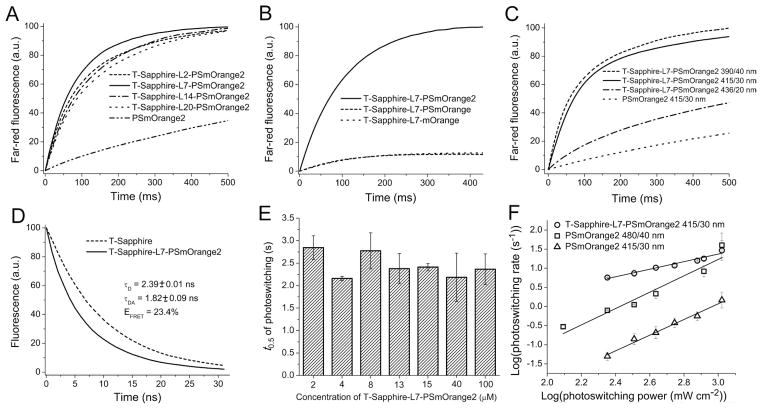Figure 5.
Properties of PSmOrange2 as a photoswitchable FRET acceptor. (A) Kinetics of farred fluorescence intensities for PSmOrange2 and for indicated T-Sapphire and PSmOrange2 fusions, in which proteins are connected with LX linkers of various lengths. X is a number of amino acid residues in a linker. (B) Kinetics of far-red fluorescence intensities for PSmOrange2, PSmOrange and mOrange linked to T-Sapphire with identical L7 linkers. (C) Kinetics of far-red fluorescence intensities for PSmOrange2 and for T-Sapphire and PSmOrange2 fusion at indicated photoswitching wavelength bands. (D) Fluorescence decay for T-Sapphire (dashed line) and T-Sapphire and PSmOrange2 fusion (solid line) at room temperature using 440 nm excitation light. (E) Photoswitching half-times (t0.5) for T-Sapphire and PSmOrange2 fusion at indicated concentrations. (F) Initial rates for PSmOrange2 photoswitching with 480/40 nm (squares) and 415/30 nm (triangles) light and T-Sapphire and PSmOrange2 fusion photoswitching with 415/30 nm light (circles) at indicated light power densities. The power densities were estimated at the sample. In (A, B, E) the 415/30 nm wavelength band was used for photoswitching. Error bars, SD.

